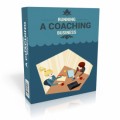Table of Contents
CHAPTER
1. 13 Ways Walking Can Benefit You 01
2. How to Choose the Right Shoes 05
3. Tips to Smart Walking 08
4. 6 Ways You Can Track Your Progress 11
5. 6 Tips To Consider When Power Walking 14
6. 9 Tips to Enjoy Walking 17
7. 8 Tips to brave the weather when Walking 20
8. 11 Ways You Can Introduce Walking In Your Daily Life 24
9. 9 Facts about Weight Loss and Walking 27
10. Walking with a Purpose 31
Sample Content Preview
CHAPTER 2
HOW TO CHOOSE THE RIGHT SHOES
One of the things you need to consider if you want to start a walking program for yourself is your footwear. Finding the right shoe for walking is essential because if you have foot pain or problems with your feet, it can cause problems with the rest of your body too – from your legs to your knees to your back and more.
Buy a Walking Shoe
If you’re going to use the shoes for walking, you should buy a walking shoe. Walking shoes are typically lightweight, allow for ventilation to prevent moisture, have outsoles that provide traction, plus they offer the right type of arch support.
You Don’t Have to Buy Expensive Shoes
You really don’t have to buy an expensive walking shoe to protect your feet. You only need to make sure it has the right walking shoe features such as those mentioned above. Look for shoe sales in January and April to get the best deals on walking shoes.
Think About How Your Foot Is Shaped
Everyone is different, so once you start looking at walking shoes you want to figure out what type of foot you have. How wide is your foot? How long is your foot? Do you have a big arch or a small arch? Different walking shoes will fit different criteria.
Ensure That the Shoe Fits
When it comes to walking shoes, you don’t need to “break them in.” They should feel comfortable from the moment you put them on. When trying on the shoes, be sure to wear the type of socks you plan to wear while walking to ensure that they fit the same. Also, try shopping for shoes after you have been walking so that your feet are at their largest size. Get your feet measured too, because you may be wearing the wrong size out of habit.
Don’t Wear Old Shoes
You really do need to buy new shoes more often than you might think. A good walking shoe will last about 400 miles of use, but you can also choose to get rid of them when the outsole is worn (as a guide). The best thing though is to check your mileage, just like you would for your car tires. If the outsole is not in good shape, it can cause a considerable impact on the rest of your body due to not giving you enough traction or cushion for your steps.
Wearing the right walking shoes will prevent issues such as blisters, as well as body pain that can be caused by the shock of your foot hitting the pavement. That’s why a walking shoe is lighter, has good shock absorption due to the way the outsole is made, and good materials inside to cushion the impact of hitting the ground with each step. Your feet will thank you, and your entire body will thank you too.
CHAPTER 3
TIPS TO SMART WALKING
The main thing to remember, no matter what you’re setting a goal for, is that your goals should be SMART. That means they need to be specific, measurable, attainable, realistic, and timely. If you make a habit of creating goals for all aspects of your life using this acronym, you’ll be a lot more successful – no matter what you do.
But before you get started with your SMART walking goals, let’s talk about some factors to consider as you’re creating your goals.
1) Know Your Fitness Level – Almost everyone can walk. This includes people who are very unhealthy, even if they can only walk for five minutes. Start with your fitness level and set your goals accordingly.
2) Know What You’re Working Toward – Pretend you stuck to everything you are supposed to on this journey; what is the dream goal you’re working toward? Even if it seems crazy, knowing that final goal is essential for designing your plans.
3) Know Your Time Availability – This is part of being realistic because if you have roadblocks to having enough time to devote to walking for health to meet your goals, you may not succeed.
Creating SMART Walking Goals
Here is an example of a healthy yet sedentary office worker for you to follow:
* Specific – My goal is to walk a minimum of 10,000 steps per day by the end of six months, starting where I am now at 1000 steps per day.
* Measurable – Every day, I will add 100 steps to my total. It will take me 90 days to reach 10,000 steps per day.
* Attainable – I am overweight but with no health problems, so my goal to walk 10,000 steps a day by the end of 90 days and to maintain it for 6 months is entirely doable in terms of my health.
* Realistic – Adding in 100 steps a day is realistic because I am healthy, and I have enough time. It’ll take me about an hour and a half at my walking pace to reach 10,000 steps. I plan to walk each morning between 7 and 9 am. I also have an indoor place I can walk when the weather is terrible.
* Timely – By adding the goal of reaching 10,000 steps in 90 days, then maintaining that for six months, it makes the goal timely – meaning it has a time limit that you have set for you to reach your goal.
- 1 Ebook (PDF), 35 Pages
- Year Released/Circulated: 2021
- File Size: 1,125 KB
License Details:
[YES] Can use
[NO] RESELL OR GIVEAWAY














